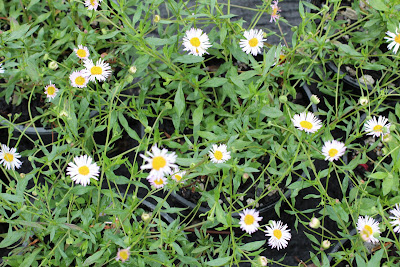
Ballantine Books NY
Cover painting: Bilbo comes to the Huts of the Raftelvesby J.R.R. Tolkien
It is not often that you get a book/movie/plant tie-in but such is the case with The Hobbit. Some very fine succulent plant cultivars of Crassula ovata, which have been in the Nursery trade for years were named after it. I have to confess to never having read Tolkien and even worse to have not seen The Lord of Rings movies, but now, one hundred pages in, I am hooked ,even if it is the kind of book which you need to read on a dark stormy night and not on a sunny day at the beach.
The Crassula plant cultivars 'Gollum', 'Hobbit' and 'Fingers' are mainly distinguished by their leaf shapes. 'Gollum' has tubular trumpet shaped leaves with suction cup tips. 'Fingers' leaves come to a tapered point and 'Hobbit' leaves are more open and spathulate. Variation in leaf shape can occur from plant to plant which can lead to some confusing naming. All form small shrubs to about 40 cm and will grow in full sun or shade. In sun and hot positions leaves will often reveal red tips or attractive yellow and gold edges. Frost will burn the leaves but plants recover well and produce new growth over summer. They make excellent container plants and are popular as hardy bonsai as they form aged "tree" trunks over time and are undemanding as to watering.

Crassula ovata 'Hobbit'
Crassula ovata 'Hobbit' in sun
what is a hobbit? They are inclined to be fat in the stomach; they dress in bright colours (chiefly green and yellow); wear no shoes, because their feet grow naturally leathery soles and thick warm brown hair like the stuff on their heads (which is curly); have long clever brown fingers, good-natured faces, and laugh deep fruit laughs........
Crassula ovata 'Gollum'
Deep down here by the dark water lived old Gollum, a small slimy creature.I don't know where he came from, nor who or what he was. He was Gollum-------as dark as darkness, except for two big round pale eyes in his thin face.
Crassula ovata 'Fingers'
Gollum was looking out of his pale lamp-like eyes for blind fish, which he grabbed with his long fingers as quick as thinking.....




















